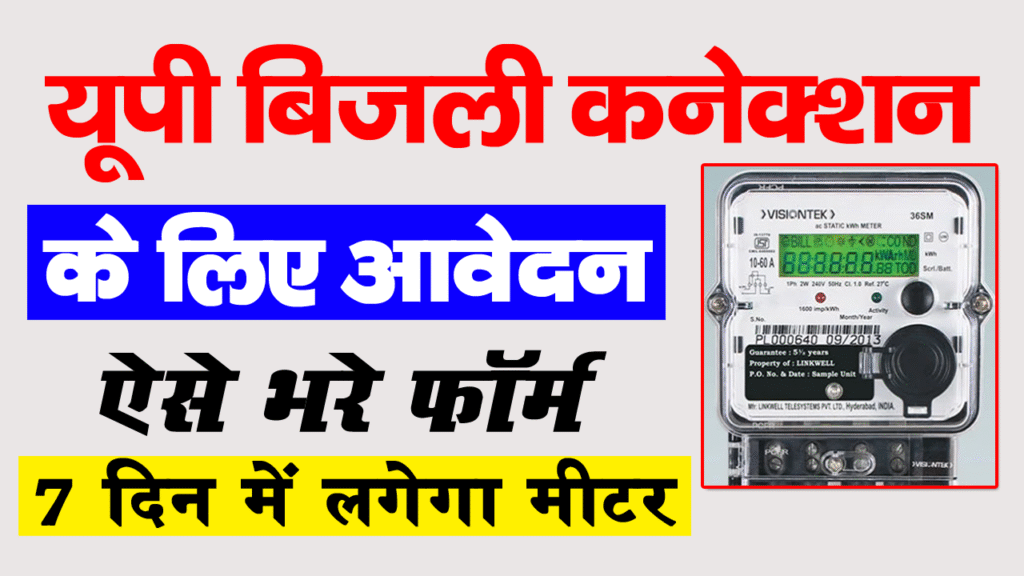UP Jhatpat Connection Yojana is started by the Uttar Pradesh Power Corporation Limited (UPPCL) to provide electricity connections in easy way. Any consumer who wants to avail a new power connection can now apply online at upenergy.in/uppcl/en or at e-suvidha or jan suvidha centres.
You can apply for a UPPCL Jhatpat Connection on the official UPPCL Jhatpat online portal. Now, those who apply for a connection will have their electricity meter installed in their homes without having to visit the electricity department office. Read this blog to know the list of documents required to apply, eligibility criteria, objective, benefits and other information.
Table of Contents
UP Jhatpat Connection Yojana
Uttar Pradesh Power Corporation Limited (UPPCL) has launched Jhatpat Connection Scheme, under which citizens can get a new electricity connection within ten days from the date of application. APL families of the scheme can apply online by paying a fee of just Rs 100 and BPL families can apply online by paying a fee of Rs 10.
Types of Electrical Connection in UP Jhatpat Connection Yojana
| Type of Electrical Connection | Minimum Load (in KW) | Maximum Load (in KW) |
| Domestic (BPL Card Holder) | 01 | 01 |
| Domestic (Non-BPL) | 01 | 500 |
| Commercial | 01 | 20 |
| Industrial | 01 | 20 |
| Private Institutional | 01 | 20 |
| Temporary | 01 | 20 |
| Electric Vehicle Charging | 01 | 20 |
Benefits of Jhatpat Connection Scheme
- Applicants no longer need to wait in long queues at government offices.
- Now, citizens can apply from the comfort of their homes.
- The processing fee for applying for an instant connection is very low.
- The instant electricity connection becomes active within ten days from the date of application.
- With a new instant connection, you can avail electricity from 1 kilowatt to 49 kilowatts.
Eligibility Criteria for Jhatpat Connection
- The applicant must be a resident of Uttar Pradesh.
- The applicant must have a valid ID for identity proof.
- The applicant must belong to a BPL or APL category family.
Documents are required for connection
- The applicant must be a permanent resident of Uttar Pradesh.
- This scheme is only available to BPL and APL families in Uttar Pradesh.
- Aadhaar Card
- Residence Certificate
- BPL and APL Ration Cards
- PAN Card
- Applicant’s Voter ID Card
- Mobile Number
- Passport Size Photograph
Application process for Jhatpat Connection Scheme
- To apply, first you need to visit the official website of the Jhatpat connection official website – https://jhatpatportal.uppcl.org/.
- Once you are on the official website’s home page, click on the “Apply for New Electricity Connection” option.
- After clicking, enter your details such as your name, date of birth, email address, etc.
- After this, log in and click on the Instant Connection option.
- Fill in the required details in the application form.
- Also upload the required documents.
- After doing this, click on the “Submit” option.
- After completing this process, your application will be processed under the Instant Connection Scheme.
How to apply for name change in Jhatpat electricity connection?
Step 1: Visit the official Instant Online portal.
Step 2: Login to the portal using your unique credentials provided by the UPPCL team.
Step 3: Enter the correct captcha displayed on the login window.
Step 4: Provide the complete address of the property along with the required details such as the property ID and location type.
Step 5: Upload supporting documents to help the officials easily verify the information provided.
Step 6: Once verified, the authorized officials will issue a feasibility report. This report will list all your electricity connection dues.
Step 7: Choose your preferred mode of payment and pay your outstanding electricity connection bill instantly.
Step 8: You will then receive a change of ownership document issued by the authority. You can download it from the official website.
UPPCL aims to provide electricity connections to the consumers in hassle free. In this Jhatpat Connection Yojana, the main focus is on providing electricity connections to APL / BPL families.

